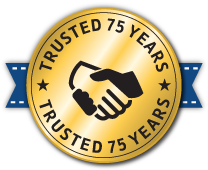Managing catch basin bleaning doesn’t have to be difficult. In fact, here’s a simple three-step guide to help.
- Keep an eye out for potential problems with the catch basins near your home or business. The most obvious signs of trouble are water pooling around the basin, slow draining, or debris covering the grate. Catch basins that appear sunken into the asphalt or concrete are damaged and need repair. Cracks in the pavement around the drain is another sign of trouble.
- Preventing storm drains from clogging in the first place is the most effective way to protect your property. The Portland Bureau of Transportation (PBOT) offers some great tips for keeping catch basins clean and working properly. The PBOT advises: “never attempt to remove storm drain grate, only the debris on top of the grate.”
- If you notice a catch basin that is not draining correctly on a busy road, or any area that might be unsafe, do not attempt to clear it yourself. Instead, contact the agency in your area responsible for storm water management. If the defective storm drain is on commercial, or private property, call a local drain and sewer service company.
Clogged catch basins can cause street flooding, create hazards for motorists and pedestrians, or lead to property damage if not managed correctly. Generally, local governments are responsible for maintaining catch basins that are located on a public right of way, but property owners are encouraged to clear debris from drains near their homes or businesses to help prevent clog related back-ups and flooding. If further maintenance to a storm drain on or close to your property is needed, please contact us. Thanks.
George Eskola of News Channel 6 in Augusta, Georgia filed this report on the issue of yard waste clogging storm drains.



